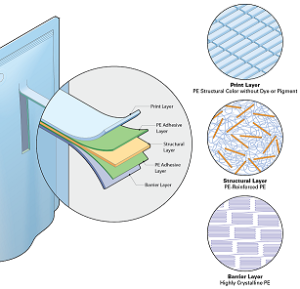
Each year more than eight million tons of plastics pollute the ocean, forming mammoth, so-called “garbage patches” via strong currents. Even with new collection methods, only 0.5 percent out of that volume is currently removed from the seas. One solution to this growing crisis is to prevent plastic from becoming waste to begin with – and researchers from the University of Pittsburgh’s Swanson School of Engineering are one of five international teams awarded for their novel solutions to this problem.
At the World Economic Forum Annual Meeting in Davos, the Ellen MacArthur Foundation and NineSigma announced the winners of the Circular Materials Challenge. The winners will each receive a $200,000 share of the $1 million prize. Together with the winners of the earlier $1 million Circular Design Challenge last October, these innovations will join a 12-month accelerator program in collaboration with Think Beyond Plastic, working with experts to make their innovations marketable at scale.
The Pitt team represents the Swanson School’s Department of Chemical and Petroleum Engineering, and includes McGowan Institute for Regenerative Medicine affiliated faculty member Eric Beckman, PhD, Distinguished Service Professor and Co-Director of the University’s Mascaro Center for Sustainable Innovation, Assistant Professor Susan Fullerton, PhD, and Associate Professor Sachin Velankar, PhD. The group was one of two winners in Category 1: “Make unrecyclable packaging recyclable,” and proposes using nano-engineering to create a recyclable material that can replace complex multi-layered packaging – mimicking the way nature uses just a few molecular building blocks to create a huge variety of materials.
“Over the past few years I had noted with interest that industries such as automotive, home appliance, and even aluminum cans were transforming their business models from traditional products to services, where goods are designed to be recovered and reused,” Dr. Beckman said. “By contrast, the paradigm of the chemical industry has, for 150 years, been short lifetime and single use. In fact, one study found that the United States only recycles nine percent of its plastic waste, well behind Europe (30 percent) and China (25 percent).
“Since simple plastics are composed of molecules that can be manipulated to perform various functions, I wondered whether we could transform a molecule from a product to service, with the most interesting applications of this being textiles and packaging.”
According to Dr. Beckman, current packaging layers for food products and drink containers are made of several different materials that are responsible for maintaining freshness, blocking UV light, holding inks for labeling, etc. Because the initial manufacturing process, the layers cannot be easily separated and therefore cannot be recycled.
The Pitt team’s solution is to alter the nano-structure of polyethylene – simple plastic – to mimic the properties of other complex materials (such as PET, EVOH, or even aluminum) in current laminate packaging. Since the basic chemistry of each layer would remain polyethylene, the packaging can then be collected with other plastics and recycled using traditional methods, removing it from the waste stream.
The importance to reducing and reusing plastic is clear: according to the foundation’s 2016 New Plastic Economy report, by 2050 oceans are expected to contain more plastics than fish (by weight), and the entire plastics industry will consume 20 percent of total oil production, and 15 percent of the annual carbon budget.
Wendy Schmidt, Lead Philanthropic Partner of the foundation’s New Plastics Economy initiative, noted, “The technical innovations developed by our winners are exactly what is needed to begin to address the wasteful material culture of the past century that is creating increasing amounts of microplastics and plastic debris on our shorelines, in our oceans, landfills and even our own bodies.”
“Creating recyclable packaging is one of the toughest challenges if we want to create a true circular economy in the U.S., since tens of millions of tons of packaging waste go straight to the landfill each year,” Dr. Beckman said. “We hope that our design not only can set a new standard for high-performing and recyclable plastics, but will stimulate people to think about other ways in which we can transform molecular products to services by mirroring nature and taking advantage of nanostructure building blocks.”
Illustration: Packaging such as juice pouches are made with bonded layers of metal such as aluminum, and different types of plastic, making them almost impossible to recycle. Because only 1-3 percent of such packaging is collected for recycling, food and beverage containers are among the top 5 items found on beaches and coastlines. To solve this problem, the University of Pittsburgh researchers propose manipulating polyethylene molecules to design layers that can each perform a specific function, creating a fully recyclable PE product. (Illustration: henkel-diagrams.com)
Read more…
New Plastics Economy News Release
Ellen MacArthur Foundation News Release
University of Pittsburgh Swanson School of Engineering News Release
